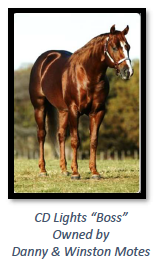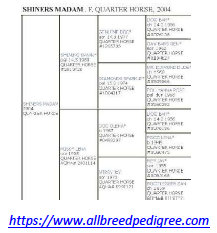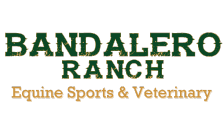Breeding a mare is a significant responsibility that requires careful planning and preparation to ensure the health and well-being of both the mare and the foal. Here are the steps to prepare for breeding your mare:
- Evaluate the Mare’s Health:
- Ensure your mare is in good overall health. This includes regular vaccinations, deworming, dental care, and hoof maintenance.
- Consult with a veterinarian to perform a thorough reproductive examination, including a uterine culture, cytology, and a breeding soundness evaluation.
- Address any health issues or concerns that may affect the mare’s ability to conceive or carry a foal to term.
- Choose a Suitable Stallion:
- Research and select a stallion that complements your mare in terms of conformation, temperament, and breeding goals.
- Consider the stallion’s pedigree, performance record, and any genetic testing if applicable.
- Discuss your choice with a veterinarian or equine reproductive specialist to ensure compatibility and increase the chances of a successful mating.
- Timing the Breeding:
- Determine the optimal time for breeding your mare. This often involves monitoring the mare’s estrus cycle and using techniques such as ultrasound to track ovarian follicle development.
- Decide whether you will opt for natural breeding or artificial insemination (AI), and follow the appropriate procedures.
- Nutrition and Conditioning:
- Maintain a balanced and appropriate diet for your mare to ensure she is in good condition for breeding.
- Consult with a veterinarian or equine nutritionist to adjust her diet as needed to support pregnancy.
- Ensure she is at an ideal body condition score, neither too thin nor overweight.
- Reproductive Health Care:
- Discuss a vaccination and deworming schedule with your veterinarian to protect the mare and potential foal from diseases.
- Implement a pre-breeding examination, including a uterine culture and cytology, to rule out any infections that could affect fertility.
- Address any reproductive issues, such as uterine inflammation or cysts, as recommended by your veterinarian.
- Breeding Facility and Equipment:
- Ensure you have access to appropriate breeding facilities.
- Breeding Contract and Agreements:
- If using a stallion from an outside owner, make sure you have a clear breeding contract outlining fees, responsibilities, and terms.
- Consider insurance options to cover any complications during pregnancy or foaling.
- Foaling and Post-Breeding Care:
- Plan for the care and management of the mare during pregnancy and after foaling.
- Develop a foaling plan, including a suitable foaling area and access to emergency veterinary care if needed.
- Ensure the mare receives appropriate prenatal care and nutrition throughout her pregnancy.
- Documentation and Record-Keeping:
- Keep detailed records of the mare’s reproductive history, estrus cycles, breeding dates, and veterinary treatments.
- Maintain a calendar or breeding journal to track important milestones and dates.
- Patience and Monitoring:
- Be patient and prepared for potential challenges or delays in the breeding process.
- Continuously monitor the mare’s reproductive status through veterinary assistance and ultrasounds.
Breeding a mare requires careful attention to detail and a commitment to the health and well-being of both the mare and the potential foal. Working closely with a veterinarian specializing in equine reproduction crucial to maximize the chances of a successful breeding outcome.
Mare Breeding Inquiry
Equine strangles, also known simply as “strangles,” is a highly contagious bacterial infection that affects horses, ponies, and other equids. It is caused by the bacterium Streptococcus equi subspecies equi (S. equi). Strangles is characterized by abscesses and inflammation of the lymph nodes in the head and neck area, leading to symptoms such as fever, nasal discharge, difficulty swallowing, and swelling of the lymph nodes.
Here are some key points about equine strangles:
- Transmission: Strangles is primarily spread through direct contact between infected and susceptible horses. This can occur through nasal discharge, pus from abscesses, shared water and feed troughs, tack and equipment, and even human handlers who come into contact with infected horses.
- Clinical Signs: Horses with strangles typically develop symptoms within 3-14 days after exposure to the bacteria. Common signs include fever, nasal discharge (often thick and purulent), coughing, difficulty swallowing, and swelling of the lymph nodes under the jaw, giving the appearance of a “strangled” throat. Abscesses may rupture and release pus, which can further spread the infection.
- Diagnosis: A veterinarian can diagnose strangles through clinical signs, examination of lymph node abscesses, and laboratory tests such as bacterial culture or PCR (polymerase chain reaction) testing.
- Treatment: Treatment of strangles typically involves supportive care, including drainage of abscesses, pain management, and antibiotics (such as penicillin or trimethoprim-sulfamethoxazole) to control the bacterial infection. Isolation of infected horses is crucial to prevent the spread of the disease.
- Quarantine and Biosecurity: Quarantine measures should be implemented to prevent the spread of strangles on a premises. This involves isolating infected horses, implementing strict hygiene practices, and monitoring all horses for symptoms. Quarantine can last several weeks until all infected horses have recovered and tested negative for the bacteria.
- Vaccination: Vaccines are available to help prevent strangles, but they are not always 100% effective. They may reduce the severity of the disease and the risk of transmission but do not provide complete immunity. Consult with a veterinarian to determine the appropriate vaccination strategy for your horses.
- Complications: Strangles can lead to various complications, including guttural pouch infections, pneumonia, and bastard strangles (when the infection spreads to other parts of the body). These complications can be severe and require specialized treatment.
- Long-term Effects: While most horses recover from strangles with proper care, some may become carriers of the bacteria and shed it intermittently without showing clinical signs. These carrier horses can serve as sources of infection for other susceptible horses.
It’s important to consult with a veterinarian if you suspect strangles in your horse or if you have concerns about preventing its spread. Early detection and proper management are essential to controlling this contagious equine disease.
First 24 hours:
Have a veterinarian perform a newborn foal exam and pull blood for assessment of Passive Transfer (i.e., foal’s blood IgG levels after consumption of colostrum). Any irregular findings or concerns during this visit can then be discussed and a plan created to move forward with to try and maximize the foal’s neonatal health and long-term success. This is also a crucial time to identify any limb conformation issues and make a plan for either corrective trimming/shoeing or schedule for re-evaluation to provide treatment during times that maximize the foal’s natural growth periods to correct issues and, in some cases, caught early enough avoid surgery and/or long-term conformation issues that will affect lifetime performance.
Day 1 thru Day 3 of Life:
- Dip Navel 2-3 times daily with aseptic solution
Optional navel dip/aseptic solutions:
Nolvasan (Chlorohexidine) solution diluted with water 1:1
1% Povidone-Iodine, or 2% Iodine
**Tincture Iodine (7%) not recommended as can cause skin irritation that can lead to infection
- Monitor Activity: Foals will sleep a lot (i.e., eat, sleep, play repeat) a nonresponsive foal or one that appears weak needs medical attention
- Monitor Urine Output
Foal should be urinating clear good stream approximately every time foal gets up to nurse, either before or after) - Monitor Manure Output
At any time if you see your foaling straining to pass manure administer one enema (adult size at any Walgreens or CVS). If enema doesn’t help consult your veterinarian.
Foal should start passing yellow pasty manure, “milk” manure at 24-36 hours of life
1 Month of Age: Any questionable limb conformation should be evaluated by a veterinarian, as in some cases such as fetlock varus/valgus (i.e., point of limb angulations starts at fetlock), corrective hoof trimming needs to start NOW.
2-3 Months of Age: Earliest recommended 1st Deworming: recommended deworm with a fenbendazole or oxibendazole.
Consult with veterinarian about starting vaccination of foal early if mare was not vaccinated or vaccination history is unknown, especially for vaccination protection from Tetanus, Rabies, & mosquito born viruses like West Nile, Eastern/Western Encephalitis
4 Months of Age: 1st Vaccines against: Tetanus + Eastern/Western Encephalitis+ Equine Herpes Virus (Rhinopneumanitis) & West Nile virus Vaccine
Foals will need 2 additional boosters of this vaccine combo roughly every 4 weeks for a total of 3 shots; to maximize West Nile antibodies (i.e., protection) it is given as its own shot for initial dose Rabies. Foals will need 1 additional booster of this vaccine
5 Months of Age: 2nd boosters against: Tetanus + Eastern/Western Encephalitis+ Equine Herpes Virus (Rhinopneumanitis), West Nile virus Vaccine & Rabies (FINAL booster for Rabies regime)
6 Months of Age: 3rd booster against Tetanus + Eastern/Western Encephalitis+ Equine Herpes Virus (Rhinopneumanitis) & West Nile virus Vaccine (final)
7 Months of Age: 2nd Deworming (ideally timed around weaning) BASED on FECAL EGG COUNT to determine which product will be most effect (e.g., using the kind of worm eggs present in fecal egg count to decide if fenbendazole or ivermectin or pyrantel is the dewormer of choice.) ***It is not recommended that moxidectin (e.g., Quest or Quest Plus) be given to horses less than year of age as it is very weight specific and easy to overdose resulting in illness and in some cases death of the horse
8 Months of Age: Recheck and revision of management plans for any angular limb deformities at level of the knee (i.e., carpal valgus/varus)
9 Months of Age: Finish up vaccine series if initial boosters were started at 6 months of age
10 Months of Age: Separate Colts from fillies and/or mares if not already done
11 Months of Age: Determine necessary paperwork & procedures for registering foal with Breed Registry if not already performed
12 Months of Age: 1st Annual Vaccines against: Rabies, Tetanus + Eastern/Western Encephalitis+ Equine Herpes Virus (Rhinopneumanitis) + Equine Influenza, & West Nile virus. Recheck Fecal Float and deworm pending what parasites are present; use a product containing praziquantel (e.g., EquiMax which is ivermectin + praziquantel) if this has NOT been previously used in treatment. ***It is not recommended that moxidectin (e.g., Quest or Quest Plus) be given to horses less than year of age as it is very weight specific and easy to overdose resulting in illness and in some cases death of the horse
If you have any questions or concerns, please don’t hesitate to ask and happy horse growing!
Labor is divided into 3 stages:
- Stage 1 begins with the onset of contractions and generally lasts one to two hours. Even in a normal delivery, the mare may stand up, lie down and roll several times in an effort to properly position the foal for delivery. During this phase, contractions move the foal through the cervix and into position in the birth canal. The fetal membranes (allantois) may become visible at the mare’s vulva. When the sac breaks, signaled by a rush of fluid, stage one ends.The rupture of the allantoic membrane and rush of placental fluids may be confused with urination.
- Stage 2 is the actual expulsion of the foal. This phase moves relatively quickly. If it takes more than 30 minutes for the mare to deliver, there is most likely a problem. If there is no significant progress within 10 to 15 minutes after the membranes rupture, call your veterinarian immediately. If labor seems to be progressing, wait and watch. Normal presentation of the foal resembles a diving position, with front feet first, one slightly ahead of the other, hooves down, followed closely by the nose, head, neck, shoulders and hindquarters. If you notice hoof soles up, the foal may be backwards or upside down, and you should call your veterinarian immediately. If you suspect any deviation from the normal delivery position, call your equine practitioner. The most deadly of foaling emergencies is a premature rupture of the chorioallantois, known as “Red Bag Delivery.” If at any time during stage two you see red/maroon membranes covering the foal as it emerges from the vagina, the placenta must be rapidly torn open. The foal is detached from its blood and oxygen supply. Normal membranes that cover the foal are white or yellow and translucent.
- Stage 3 labor begins after delivery and is the phase during which the afterbirth (placenta) is expelled. Most placentas are passed within 1-3 hours after the foal is delivered. If the placenta has not passed within 3 hours, call your veterinarian. A retained placenta can cause serious problems, including massive infection and laminitis.
Contributing author Ben Espy, DVM, DACT
Foaling Mare & Newborn: Preparing for a Safe & Successful Foal Delivery
www.aaep.org

Carl Mitz
Certified Dental Provider
Carl Mitz joined Bandalero’s team over ten years ago. Together Dr. Lindholm and Carl make a valuable team for Arizona residents providing routine dental care of equines. Carl brings his dental expertise to Bandalero clientele bi-annually.
Carl has over 35 years in Equine Dentistry and is a third-generation horseman. He has held State Racing Licenses in Kentucky, Ohio, Michigan, Arkansas, and Florida to provide dental maintenance to racehorses. One of his most well-known accomplishments is his research and development of equine dental instruments and techniques for horses of all sizes and purposes.
Carl was certified in 1992 by the IAEDT and certified in Advanced Dentistry in 2002 by the IAED (International Association of Equine Dentistry). He is a past president of the IAEDT and IAED.
Carl helped published in two Veterinary Manuals- Equine Dentistry: A Practical Guide by Pat Pence, DVM and The Manual of Equine Dentistry by Tom Allen, DVM. He has also been an associate, consultant, and volunteer for many organizations, universities, and registries to promote the need for qualified dental providers to ensure the betterment and health of the horse. In 2011, he was appointed to the Advisory Committee of the Texas Board of Veterinary Medical Examiners.
Carl Mitz is the brainchild behind the EDPA (Equine Dental Providers of America). Established in 2012, based on the idea of health and betterment of the horse and the need for proper certification as well as an increase in equine dentistry in the USA. The EDPA provides education to veterinarians, individuals wanting to become and/or continue there skills as equine dental providers and horse owners. The EDPA’s goal is to continue the research and development of methods and procedures with a high standard of care and compliance for all equine dental providers.
Choosing the right stallion can be difficult and finding the right veterinarian is one of the most important aspects. Look for someone who specializes in breeding or has been breeding horses for many years. A skilled veterinarian will help make the process go smoother.
 Consider everything you like about your mare; attitude, confirmation, performance skill as well as what you don’t like about her. Be critical and ask others. If your mare has been trained by a professional, ask the trainer for their opinion. Trainers get to ride a variety of horses and can give valuable feedback. When looking for a stallion you want to compliment your mare’s strengths and not double up on her weaknesses.
Consider everything you like about your mare; attitude, confirmation, performance skill as well as what you don’t like about her. Be critical and ask others. If your mare has been trained by a professional, ask the trainer for their opinion. Trainers get to ride a variety of horses and can give valuable feedback. When looking for a stallion you want to compliment your mare’s strengths and not double up on her weaknesses.
Are you breeding for a specific discipline, or a specific size? Are you planning on keeping the foal for your personal use or planning to sell it after it is weaned? Often, stallions who are more well know will bring better money than those less know in their industry.
 When you have your thoughts on a stallion, talk to as many people about the stallion as possible. Ask about what they like about the stallion and what they would change if they could. Look at their offspring’s performance record. Have they been mostly ridden by a professional trainer or amateur riders? If you can, visit the stallion in person, do it. Pictures can be deceiving. This will also give you time to see what the stallion’s temperament is when you are around them.
When you have your thoughts on a stallion, talk to as many people about the stallion as possible. Ask about what they like about the stallion and what they would change if they could. Look at their offspring’s performance record. Have they been mostly ridden by a professional trainer or amateur riders? If you can, visit the stallion in person, do it. Pictures can be deceiving. This will also give you time to see what the stallion’s temperament is when you are around them.
Do research on your mare’s bloodlines. Look at what crosses have worked with her bloodlines and what have not. If you show competitively, this will be evident in show records. Remember, both mare and stallion bring their genetics to the table. If your mare is longer in the back and you don’t like that, than look for a stallion who is shorter in the back and can potential change that for you. Breeding to a stallion with the same confirmation as your mare, will only double your chances of reproducing the same confirmation.
Remember to ask plenty of questions. If this is your first-time breeding, schedule a breeding soundness exam with your veterinarian. https://www.allbreedpedigree.com This will help you understand where your mare is at reproductively before paying for a stud fee and finding out your mare is not suitable to be bred. Ask your veterinarian what the cost of breeding will be. Are there any hidden costs? Understand how much you are willing to spend on the process.
 Ask if breeding with cooled shipped semen is less expensive than breeding with frozen semen, and what to consider in conception rates between the two. Veterinarians who specialized in breeding might know the stallion you are considering and have firsthand knowledge of his semen quality when it is shipped overnight via Fed-Ex or transported commercial airline cargo for same day insemination.
Ask if breeding with cooled shipped semen is less expensive than breeding with frozen semen, and what to consider in conception rates between the two. Veterinarians who specialized in breeding might know the stallion you are considering and have firsthand knowledge of his semen quality when it is shipped overnight via Fed-Ex or transported commercial airline cargo for same day insemination.
 Lastly, make sure you fully understand the terms of the breeding contract. What type of semen are you purchasing, cooled shipped or frozen? What is the stallion’s availability for the breeding season? Does he have a show schedule? Is the stallion a carrier of diseases such as equine viral arteritis (EVA), hereditary equine regional dermal asthenia (HERDA) or hyperkalemic periodic paralysis (HYPP). Does the contract have a live foal guarantee, standing and nursing? If your mare does not get pregnant during the initial breeding year can you try again the following year and what are the additional costs to you? To avoid misunderstandings on the issue, mare owners should look for how the contract defines re-breed rights. Can you substitute an alternate mare if the one you originally chose is not a good candidate for some reason?
Lastly, make sure you fully understand the terms of the breeding contract. What type of semen are you purchasing, cooled shipped or frozen? What is the stallion’s availability for the breeding season? Does he have a show schedule? Is the stallion a carrier of diseases such as equine viral arteritis (EVA), hereditary equine regional dermal asthenia (HERDA) or hyperkalemic periodic paralysis (HYPP). Does the contract have a live foal guarantee, standing and nursing? If your mare does not get pregnant during the initial breeding year can you try again the following year and what are the additional costs to you? To avoid misunderstandings on the issue, mare owners should look for how the contract defines re-breed rights. Can you substitute an alternate mare if the one you originally chose is not a good candidate for some reason?
Horses with dental problems may show obvious signs, such as pain or irritation, or they may show no noticeable signs at all. This is because some horses simply adapt to their discomfort. For this reason, periodic dental examinations are essential to your horse’s health.
It is important to catch dental problems early. If a horse starts behaving abnormally, dental problems should be considered as a potential cause. Waiting too long may increase the difficulty of remedying certain conditions or may even make remedy impossible. Look for the following indicators of dental problems from the American Association of Equine Practitioners (AAEP) to know when to seek veterinary attention for your horse:
-
1. Loss of feed from mouth while eating, difficulty with chewing, or excessive salivation.
-
2. Loss of body condition.
-
3. Large or undigested feed particles (long stems or whole grain) in manure.
-
4. Head tilting or tossing, bit chewing, tongue lolling, fighting the bit, or resisting bridling.
-
5. Poor performance, such as lugging on the bridle, failing to turn or stop, even bucking.
-
6. Foul odor from mouth or nostrils, or traces of blood from the mouth.
-
7. Nasal discharge or swelling of the face, jaw or mouth tissues.
Oral exams should be an essential part of an annual physical examination by a veterinarian. Every dental exam provides the opportunity to perform routine preventative dental maintenance. Mature horses should get a thorough dental exam at least once a year, and horses 2 to 5-years-old should be examined twice yearly.
For more information about proper dental care, ask your equine veterinarian. Additional information is available on the AAEP’s website, www.aaep.org/horseowner.
Reprinted with permission from the American Association of Equine Practitioners.
Through the years, Bandalero Ranch has taught many stallions both young and old to use a phantom mare. Most stallions will mount readily and can be collected successfully with relatively few attempts. It is difficult to predict how a stallion will act until teaching begins. A stallion whose behavior is “quiet” or those stallions slow to breed may take more time due to their timidity, or low libido, however they will eventually use a phantom just as well as any other stallion once confidence and understanding is gained.
In our experience, the average stallion can take one to three sessions prior to a successful collection. Those stallions who have previously live covered mares may take additional sessions since they are initially confused when they are not permitted to mount the tease mare. Once a successful collection is achieved, two to three more collections to reinforce the behavior will provide us some predictability and reliability that he will perform when necessary.
We maintain a mare for teaching and general collecting purposes. This mare is quiet and shows estrus well which encourages each stallion and gives him confidence. Each session takes a team of three people; the stallion handler, mare handler and the collector/veterinarian. .The mare handler strategically places the mare next to our teasing partition, giving the stallion, mare and handlers safe access for teasing. In most cases, this is enough to stimulate the stallion. In special circumstances, the mare is positioned next to the phantom mare on the opposite side from where the stallion will be presented. The stallion has already been prepped and is led up so that he can tease the mare over the phantom. The person handling the artificial vagina must be prepared to collect the semen wherever the stallion mounts. If the stallion is being trained to use an in-line artificial vagina the person then helps the stallion guide his penis into the in-line artificial vagina. A young stallion does not always mount on the proper end and to insist that he does can result in frustration. Stallions are quick learners; once success is attained there will be improvement with each subsequent session.
In most cases, this is enough to stimulate the stallion. In special circumstances, the mare is positioned next to the phantom mare on the opposite side from where the stallion will be presented. The stallion has already been prepped and is led up so that he can tease the mare over the phantom. The person handling the artificial vagina must be prepared to collect the semen wherever the stallion mounts. If the stallion is being trained to use an in-line artificial vagina the person then helps the stallion guide his penis into the in-line artificial vagina. A young stallion does not always mount on the proper end and to insist that he does can result in frustration. Stallions are quick learners; once success is attained there will be improvement with each subsequent session.
If you are planning to stand your stallion, this teaching period is an excellent time to test your stallion’s semen for fresh cooled transport. Our 48 hour semen viability test will provide you with valuable information for marketing.
Myths of Equine Dentistry
Written by Carl Mitz, Bandalero’s Equine Dental Provider
- Only old horses need to be floated.
- I feed corn, so my horse doesn’t need to be floated.
- Fat horses surely won’t need to be floated.
- I do not ride my horse(s), so they don’t need to be floated.
These statements are simply not true! All horses require routine dental maintenance, from cap extractions, tooth extractions, floating, molar extractions, incisor extractions, wave complex reduction, and the list goes on. Proving routine dental care ensures the health and longevity of your horse.
Have your horse “vetted out.”
Your veterinarian should be contacted and requested to perform a pre-purchase examination of any horse you might consider purchasing. A pre-purchase examination is entirely different from a veterinary examination pertaining to normal vaccinations, deworming, or any other sort of veterinary procedure. Generally, horses are sold with no warranties, with some limits, and if the buyer elects not to have the horse “vetted out,” the buyer in most cases purchases the horse — AS IS. That is, what you see is what you get.
Realize your limitations
Even if you buy a well-trained horse that has won numerous championships, there is no guarantee that you or your child will be able to reach the level of performance achieved by other riders with the same horse. That is not to say that you will not achieve success, but horses are not much different from people in that various personalities get along better than others. You should assume that your horse will respond differently to you than its previous owner, and we all hope the productivity established by such relationship is greater than that of the previous owner.
Ask questions
Most people hate to admit that there is something they do not know. Consequently, many people do not want to ask questions that would, in their opinion, make them appear ignorant or less than expert. The horse industry is very complex and operates under its own rules and traditions, independent of what one may perceive as normal in other areas of sales. If you do not know something, ask questions . . . we are more than happy to assist you in any manner possible and it is important to us to know that you know what you are getting. We will do everything possible to help you make a reasonable and rational decision regarding any purchase. The ultimate decision must rest with the buyer and it is our objective to assist any prospective buyer in formulating and analyzing whatever issues the buyer may deem appropriate.
What you see is what you see is what you get!
Horses change hands from time to time and it is somewhat different than buying a car. A horse may be injured and suffer permanent damage, or it may be abused from owner to owner causing certain behavioral traits which were apparent at one time and may not be apparent at others. Realize that each horse-related transaction is different from the others, and each transaction must be evaluated on its own merits.



